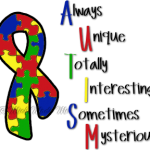Published in 2018 is a consensus based approach for the myotonic dystrophy patient community. This gives general guidelines on how to approach, test and intervene in patients lives to achieve the most optimum outcomes.
Care-recommendations-for-adulats-with-Myotonic-DystrophyCategory Archives: Juvenile Myotonic Dystrophy
Myotonic Dysrophy Drugs Lead Candidates for Fast Track Autism Spectrum Disorder Testing

NIH officials announced yesterday that a new contract has been let with UCLA to form a network of researchers at various academic institutions to identify promising new and older drug compounds to treat Autism Spectrum Disorder (ASD) and to see if they merit additional investments.
The program is part of a new initiative called “Fast Fail” intends to vastly speed up the drug development process and reduce the costs of this drug development. Instead of taking years of work to see if a drug works this Fast Fail process could see results within weeks. As ASD is a huge issue for the USa and other countries this fast testing with myotonic dystrophy drugs could lead to treatments in a much faster time frame.
Dr. James McCraken who is leading the effort at UCLA states “The Whole idea is just getting much better in these early phases at identifying drugs that are going to be efficacious and safe and thereby speeding the development of effective new therapies and reducing the overall cost”
Autism Spectrum Disorder in Congential and Childhood Myotonic Dystrophy
 Issues and problems with children that have congenital or juvenile myotonic dystrophy are many and hard to pin down. One of the most asked questions is about Autism and do children with Congenital Myotonic Dystrophy have Autism or Autism spectrum disorder. The basic criteria more are defined below for Autism like Features are before 3 years old the following 3 features are delayed or not present:
Issues and problems with children that have congenital or juvenile myotonic dystrophy are many and hard to pin down. One of the most asked questions is about Autism and do children with Congenital Myotonic Dystrophy have Autism or Autism spectrum disorder. The basic criteria more are defined below for Autism like Features are before 3 years old the following 3 features are delayed or not present:
(A) social interaction,
(B) language as used in social communication
(C) symbolic or imaginative play
The most advanced countries in the world studying these diseases are in the Scandinavian countries. Sweden has taken the lead in publishing a number of English studies that have helped understand this condition. Dr, Eckstrom and others have done a fine job in the area of pulling more information out of surveys and studies to assist us with the understanding of this disease. This article is going to summarize the results of a study that was finished in 2008. There is a lot of information here so it will be a longer post:
Juvenile and Childhood onset DM
|
There is not much information on the juvenile form of CMD. There is a really good 30 minutes video about the Childhood forms (Red link at end of column). There is also a drug under development by Ionic Pharmaceuticals in Carlsbad, CA. BREAKING NEWS ON TREATMENTS: A recent study (Dec 2015) by Japanese and Polish researchers have found that Erythromycin an FDA approved drug might help with the treatment of Myotonic Dystrophy. This drug helped with the treatment of gastric symptoms in patients with myotonic dystrophy in a separate study in 2002. As the Juvenila and Childhood forms will be there for years your doctor may want to consider this treatment. Read more about this potential treatment here. |
Congential Myotonic Dystrophy Analysis of US National Registry
The percentage of the population with DM in the USA registered is less than 5% leading to a highly biased sampling.
Congenital myotonic dystrophy in a national registry
Paediatr Child Health. 2010 October; 15(8): 514–518.
Abstract
AIM:
To describe the neonatal symptoms, developmental problems and chronic multisystem medical morbidities of congenital myotonic dystrophy (CDM) patients registered in the United States National Registry of Myotonic Dystrophy – a disease-specific, self-report program maintained since 2002. Comparisons with the Canadian Paediatric Surveillance Program for CDM are highlighted.

